|
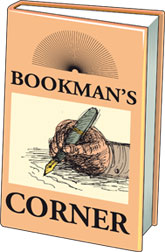
Rural charm captivated in tranquillity
Reviewed by Indeewara Thilakarathne
Without some goal and some effort to reach it, no one can live-
Fyodor Dostoyevsky
The genre of biographical novel, albeit not new to Sri Lankan
writings in English, is not so common among the contemporary literary
production in English. A significant aspect of biographical novel is the
account of personal experiences and places and particular time
associated with an important period of the novelist. Biographical novels
are often coloured by grotesque descriptions of an imaginary or a
factual place where the author has spent an important period of life.
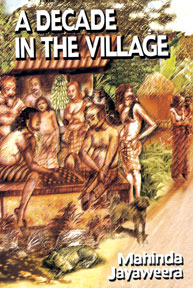 |
|
A decade in the village
Author : Mahinda Jayaweera |
The novel ' A decade in the village' by Mahinda Jayaweera falls into
the genre of biographical novel on many accounts; for it is a lively
portrays of village life in the forties and fifties of a rural community
through the eyes of a young English trained teacher who arrives in the
village of Parakgama. The story captures not only the quite
socio-cultural milieu but the characters peopled the era and the sheer
joy of agriculture which the author described not merely as the
principal occupation but a way of life and rituals associated with
agriculture.
"During those bygone days paddy cultivation was considered not mere
economic activity, but a pleasant way of life, and harvesting melodic
slice of that... The harvesting of Paddy in the fields of Parakgama
usually commenced at the beginning of January and was completed by
mid-February, before the advent of seasonal rains. "
The author extensively describes the rituals associated with paddy
harvesting. "The family found it difficult to cultivate entire extent,
hence more than three fourth of the land was released to the peasants
for cultivation under the Ande system. The Ande was a harmonious
arrangement made between the landlord and the peasant for the peaceful
survival of both. Under the simple unwritten MOU, the system worked in
such a perfect order that hardly a problem arose between the parties in
its implementation. "
In the chapter 'Independence', the author has captured the tense
political atmosphere building up leading to the independence. "The Tamil
leaders who were mindful of the absolute strength of Sinhalese with
their seventy four percent share of the population, had reservations
about latter's generosity towards the minorities under a rule of
majority. The Tamils were worried about losing perks, promotions and
privileges that they enjoyed under the colonial rule. In the
circumstances, they demanded 'fifty-fifty' status in the administration
of the country under the new Constitution that was to come into effect
in the near future". The narrator of the story is Lawrence, the young
teacher of English who is the mouthpiece of the author.
One of the interesting chapters of the novel is the chapter on 'The
Walawwa community' where the undisputed power wielded by elite on the
population at large has been described perhaps, through the eyes of a
sociologist rather than fiction writer. The author describes the elite
as a powerful social institution.
"Although word Wallawwa was commonly used to refer to the residences
of the members of the nobility, it also connotes a broader concept of a
powerful social institution which enjoyed enormous influence and
authority during the last line of Kandyan kings and subsequent colonial
times as well. In the Kandyan provinces which included Uva, Wellassa,
Tamankaduwa, Nuwarakalaviya, Sathkorale and Sabaragamuwa, that important
and influential segment of the society known as Radala lived in mansions
called Wallawwas.
A striking feature of the novel or the autobiographical novel is that
it not only relates a story of a young teacher of English who worked in
a school in the village of Parakgama but captures the socio-economic
changes in the pre and the post independent Sri Lanka and how they
profoundly affects the lives of the people in an up-country village
steeped in traditions and conventions. The author incorporates caste
system and other social institutions into the plot as a part of the
description of the village. In the chapter thirteen, the author
extensively deals with the cast system prevalent in the village.
"There lived in the large village of Parakgama, people belonging to
all upcountry castes other than Chandala, the caste considered to be
outcast. The members of the different castes lived in separate village
pockets as distinct cultural groups. The names given to these hamlets
identified the caste of the people who lived there. For instance,
Duragodella was the home of Dura also known as Bathgama community,
Radahena that of the washermen, Kumbaladeniya that of the potters,
Berawakanda that of tom-tom beaters, Hakurumulla that of Hakuru or
Wahumpura people, Kammaltenna that of blacksmiths ..."
The nomenclature of the village according to the caste system has
also been described in detail. One of the distinguish features of
nomenclature is that it distinctively associated with the caste system
and served as an identifier.
The author states, "Within Goigama caste, there existed distinct
subdivisions based on class and some other factors. Right on top, was
the nobility known as Radala, and then came that wealthy and influential
segment known as Nilames and Ralahamies, to be followed by third and
fourth sub-divisions respectfully. The third consisted of those families
which carried 'Ge-names' such as Mudiyanselage, Ralahamilage, Ralalage,
Arachchilage, Appuhamilage...while the rest of the Goigama people fell
into the fourth category".
In terms of language and idiom, novel 'A decade in the village'
stands out among contemporary Sri Lankan writings in English for the use
of Standard English although influence of Sinhala is obvious on some
occasions in the narration. By and large the novel is autobiographical
and the author Mahinda Jayaweera has used a simple diction to depict a
traditional up country village at the dusk of British colonialism in Sri
Lanka.
What the author portrays in the up country village of Parakgama is
the lives of villagers, their struggle for survival and the charms of
the village life of that bygone milieu. Novel is noted for authentic and
untainted portrayal of village life and the milieu and the detailed
description of sociological aspects such a power relations between the
village population and the nobility and the emergence of new educated
class outside the nobility who claimed a considerable clout in the
affairs of the village.
The novel 'A decade in the village' is an important contribution to
Sri Lankan writings in English.
Authentic revelations of Cub Scout Handbook
Reviewed by Gasperson Jeyachandra
Whether the theories of Cub Scout exist or not is a subject that
seems to have led the youth into personality development even from the
early days of our civilization. It can be surmised that the whole gamut
of human knowledge in this regard has been gained through our own
beliefs, personal and empirical experiences, contemplations and also by
way of various experimental undertakings and speculations of later
times.
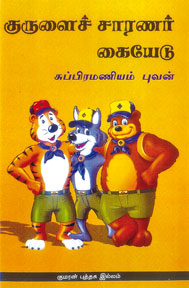 |
|
Author :
Subramaniam Bhuvan
Published by
Kumaran Book House |
Therefore, it has intrinsically and extrinsically taken the shape
of a complex and more complicated issue posting before us a difficult
problem which is very hard to elucidate and bring forth a comprehensive
and clear solution which can adequately quench the thirst of the
interested seekers of truth about Cub Scouting for Junior students.
At this controversial juncture, Subramaniam Bhuvan has taken step
forward by launching a book titled 'Cub Scout Handbook' with a view to
unravelling the realities embodied in this problematic issue. He brings
out some authentic revelations about the whole concept of Cub Scouting,
based on the prescribed syllabus for Cub Scouts released by the
headquarters, Sri Lanka Scout Association.
This is the first Tamil medium handy book on Cub Scouting with 126
pages printed on high quality paper.
The author has made a unique effort to explain the concept of Cub
Scouting and its realities.
The most salient characteristic of this book is the author's frank
and solemn exposure of the fact that the vast knowledge on Cub
Scouting/Scouting acquired by him has been purely through his sincere
dedication and hard work for the betterment of Sri Lankan youth during
the National Jambories and Cambories, training and workshops.
Since the author is well-versed both in English and Tamil, his
diction here is lawless, easy to understand and commendable. As such,
one is compelled to go on reading the book at one stretch with unabated
interest and enthusiasm. His artistic craftsmanship shown in writing
this book is praiseworthy.
I am sure that the book is an avenue to broaden the horizons of one's
knowledge in many ways.
Alfred Lord Tennyson :
A study in turmoil
by Gwen Herat
Of all the English poets who mostly wrote for the youth, Alfred Lord
Tennyson remains the much-sought and adored lyrical writer of beauty,
passion and people. Though he still lags behind William Wordsworth in
the classroom, he remains high in popularity. I always found Tennyson to
be a poet of great depth, passion and imagination. He would drive an owl
off its branch with his lyrical wordings. Tennyson addresses his
subjects quite frankly, each poem with its own individuality. Be it a
bird or a human, he livens up its character. The dreary OWL takes pride
of place like the most wondrous Lady of Shalott. This, one of my
favourite poems from my student days, another being the Daffodils by
another English poet, William Wordsworth. Nothing could have changed my
adoration for them or replace them. But as I grew up I merged in the
beauty of Daffodils. I was gripped by yet another poet, Omar Khyaam
whose Rubait, I find dazzling in its words and meanings.
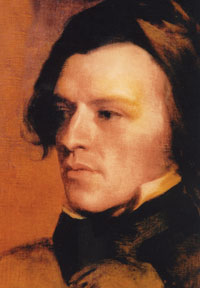 |
|
Alfred Lord Tennyson, the youthful
Master of rhyme, metre, imagery and brilliance and poet
laureate. (Portrait by Samuel Laurence at the National
Portrait Gallery, London.) |
But Tennyson, his early life was a shamble from which he rose like an
ember with a dark family history. He had to fight his way out of its
grip. This reason accounts many teachers to speak faintly to the late
twentieth century attentive readings in the classroom. He has been
associated with dark, sensuous, morbid creative temper. May be at times,
Tennyson wrote on compulsion or at a dark period of his life. One must
remember how burdened he was under turmoil at his young age. Born at the
rectory of Somersby,. a pretty Lincolnshire village in 1809, he was the
third surviving son of George and Elizabeth Tennyson. Although his
father was the rector and eldest son of a prosperous family, he was
disillusioned because a considerable estate had been willed to his
ambitious younger brother, Charles. This rankled the family and George
Tennyson became increasingly depressive, violent and addictive. After a
year of estrangement from his wife and family, he died of drinks and
drugs. This had an adverse effect on the young Tennyson and after a long
battle with depression amongst his other siblings who had histories of
mental instability, he was further weighed down in mind when his brother
Edward was committed to a lunatic asylum until his death. All these had
a toll on Tennyson.
However, his education that was rigorously classical came from his
rector-father and as he turned 16, he was writing and he published a
volume of poetry with his elder brother in 1827. That year he went to
Trinity College and Cambridge and won a prize for his poem, Timbuctoo.
In the following years, many poems were published but the poem, Memoriam
published and dedicated to his best friend, Arthur Hallam who suddenly
died on a visit to Vienna, earned him the laureateship. It is perhaps
Tennyson's best poem. Tennyson fell painfully in love with a rich
heiress, the beautiful Rosa Baring in 1835. But her rejection of him
inspired some of his very mournful poems that hinted at the soreness
about social position. Among them, Locksley Hall is very strange and
difficult with a bitter lover, jilted by a proud rich woman, thus
echoing the rejection of Rosa Baring.
Now, let us look back at The Lady of Shalott, the awe inspiring poem,
lyrically dazzling, seemingly emotional and beautifully languished. It
tells the story of a damsel caught up in a web of curse. This narrative
poem can also be read as an allegory for the artist who is toiling in
seclusion. The first part, portrayed in her ghastly enchanted room and
the following parts with the intrusion of the wide world as she looks
out to Lancelot and beyond that invites her death. A very powerful and
abiding story narrated to captivate our imagination The Lady of Shallot
has been read by one and all in the classroom. It is made up in 4 parts
and 9-lined 19 verses. Picking out some of the outstanding verses:
On either side the river lie
Long field of barley and of rye
That clothe the world and meet the sky
And thro' the fields the road runs by
To many towered Camelot
And up and down the people go
Gazing where the lilies blow
Round an island there below
There she weaves by night and day
A magic web with colours gay
She has heard a whisper say
A curse is on her if she stay
To look down to Camelot
She knows not what the curse may be
And she weaveth steadily,
And little other care hath she
The Lady of Shalott......
Tennyson's profound knowledge of classicism is found in Ulysses,
Tithonus and The Lotus Eaters, they deal with temptation of idleness.
ULYSSES reveals how bored the old war-leader is with the peaceful life
of an idle king. He craves for the last odyssey with his old companions.
Raking up his lifestyle, I am to believe that his checkquered
limitless bounce subconsciously written in lines, give way to his
emotions, experience of what he lost and found. Tennyson was not
presumptious, nor boastful or sneering in his narratives. He spoke the
truth from his heart and his spirit live by in all his poems.
I waited for the train at Coventry,
I hung with grooms and porters on the bridge
To watch the three tall spires, and there I shaped
The city's ancient legend into this:- From Godiva (verse 1)
Mirudangam player of high standard
By Chelvatamby Maniccavasagar
Dance and music are the great pride of our cultural scene today and
they have been given divine origin in India and Sri Lanka. To the
ancients dance and music were path to reality, to godliness, to
divinity. In fact, art is an attempt to bring down within the vision of
ordinary morals some of the divine beauty.
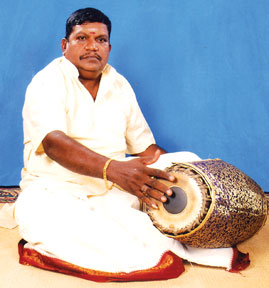 |
|
Jambunathan plays the
mirudangam. |
Beauty diversified into art is the refined uplift of humanity. It is
the instrument to culture, the broadening of the heart, the purifying
fire which burns the prejudices, all pettiness and all coarseness.
In fact, there is no dearth at all of literary and artistic talent in
Sri Lankans. One can at a moment's notice reel off a list of names of
painters, poets, actors, authors, writers and journalists who have hit
the headline not only in Sri Lanka, but also in other countries. But, it
is certainly unusual to find a whole family in the limelight. Such a
family is "Isaimamam", "Miru Thanga Kalavithakar" "Isaikkalaimani" Brama
Sri V, Jambunathan.
In fact, he was born into a family which has contributed immensely
for the development and promotion of art and culture. His father
Visvanathan was a veteran musician from Tellipali, a town in Jaffna
which is well-known for musicians and great scholars, 'Isai Kala' Mani"
Jambunathan learnt Mirudangam from his father in the Guru-Shishya
tradition. Thereafter, he obtained his Diploma in Mirudangam from the
Aesthetic Faculty of the University of Jaffna (1977-1981) and got the
title of "Isaikalaimani", He also learnt "Mirudangam" from Annamalai
University from Prof. Kalai Arasu, "Sangeetha Bhooshanam" A.S.
Ramanathan. He obtained a degree from "Ceylon Music Society" and got the
title of "Mirudangakala Vithagar" presently, he functions as a lecture
in the Faculty of Visual performing Arts at the University of Colombo
and is a lecturer at Nadeswaralaya Music and Dance" Academy. He has
participated in "SLBC", "SLRC" programmes in Mirudangam and several
music, dance Arangetrams. He was conferred with "Isai Selvar" award in
2010 by "Alabana Music Society" in recognition and appreciation of his
music talent.
Saga of Elephant in Sri Lanka
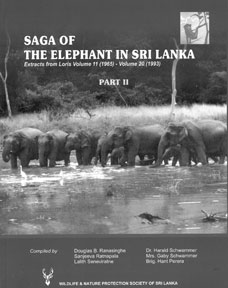 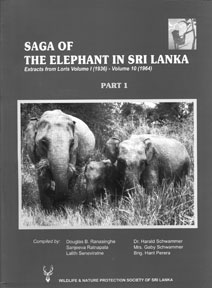 The Wildlife and Nature Protection Society has recently printed a
book in two volumes titled "Saga of the Sri Lankan Elephant". The book
is a collection of articles written about Sri Lanka's elephants
extracted from the Loris magazine the official journal of the Wildlife
and Nature Protection Society the oldest organization in Sri Lanka
committed to preserving the environment in Sri Lanka. The Wildlife and Nature Protection Society has recently printed a
book in two volumes titled "Saga of the Sri Lankan Elephant". The book
is a collection of articles written about Sri Lanka's elephants
extracted from the Loris magazine the official journal of the Wildlife
and Nature Protection Society the oldest organization in Sri Lanka
committed to preserving the environment in Sri Lanka.
The articles have been carefully selected to rekindle the interest on
elephants that are now facing many difficulties and the reader's
interest is maintained up to the final chapter.
The articles have been
written in lucid language and the book is a must for those who have an
abiding interest in elephants of Sri Lanka.
The two volumes are available at the Wildlife and Nature Protection
Society at Battaramulla.
A Tigress of Kilinochchi
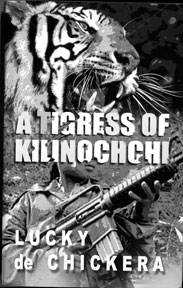
Lucky de Chickera will be available for autographing his debut book
"A Tigress of Kilinochchi" at the Barefoot Book Shop ,Colombo 4, for
customers, on Saturday 16 October from 10.30 am to 2 pm.
The book of fictional short stories where the titled story takes
centr estage, tells of a family that were affected by the ethnic
fighting and brings out the futility and the inhumanity of resorting to
arms for solution finding.
An explicit narration written in clear cut and laid- back
prose,readers will have no difficulty in enjoying the colourful and
intriguing stories.
NEW ARRIVALS
Mage Rattaran Thaththa
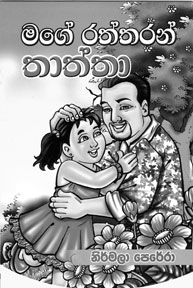
Nirmala Perera's latest book for children is ideal reading for both
Buddhist and Christian children. The author has written a story based on
a real incident. Mage Rattaran Thaththa is a Saranga Publication.
*****
Laika
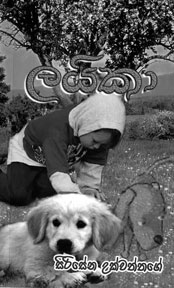
Sirisena Ukwattage's short story collection entitled 'Laika' was
launched recently. Laika is an Amara publication.
|

